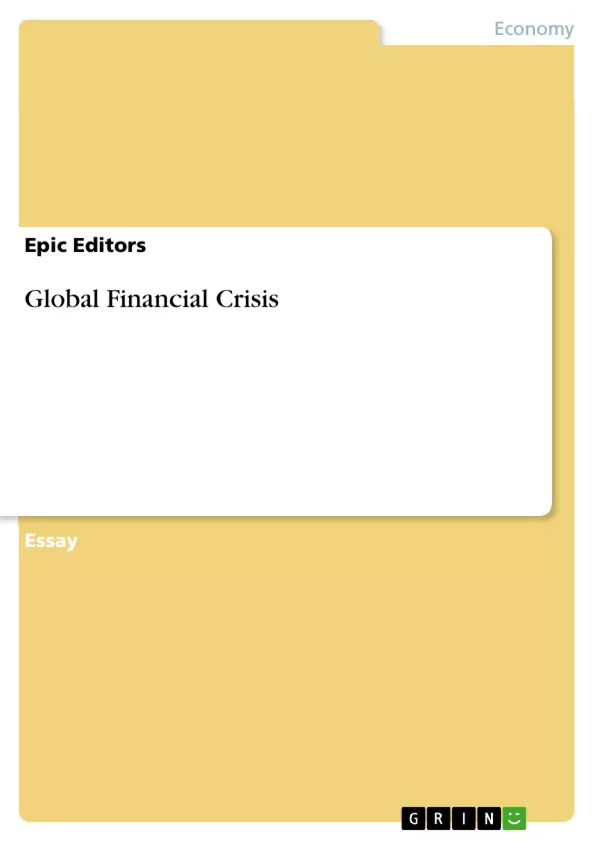According to scholars, a financial crisis is an expansive variety of situations in that some if not all of the available financial assets abruptly drop a large part of their original value. Notably, in the 19th and 20th centuries, a lot of the financial crises were linked with banking panics and confusion. Similarly, there are instances that can be referred to as a financial crisis these are the stock market crisis, sovereign defaults, currency crisis, speculative bubbles and crashes, international financial crisis and lastly wider economic crisis. It is important to understand that a financial crisis may result in the loss of paper wealth however it does not necessarily conclude in compelling changes in the real economy. This paper will discuss firstly, the possible causes of financial crisis. Secondly, the different impacts experienced in economies as a result of the global financial crisis and lastly evaluate some of the actual or proposed reforms available.
Inhaltsverzeichnis (Table of Contents)
- Causes of Financial Crisis
- Leverage
- Asset-Liability Mismatch
- Uncertainty And Herd Behavior
- Regulatory Failures
- Global Financial Crisis (GFC)
- The Impact of GFC on Economies
- Actual or Proposed Reforms
Zielsetzung und Themenschwerpunkte (Objectives and Key Themes)
This paper investigates the causes of financial crises, focusing on leverage, asset-liability mismatch, uncertainty and herd behavior, and regulatory failures. It explores the impact of the Global Financial Crisis (GFC) on various economies and examines actual or proposed reforms designed to prevent future crises.
- Causes of Financial Crisis
- Impact of the Global Financial Crisis
- Regulatory Frameworks and their Effectiveness
- Economic Consequences of Financial Crises
- Potential Reforms to Mitigate Future Crises
Zusammenfassung der Kapitel (Chapter Summaries)
- Causes of Financial Crisis: This chapter delves into the factors contributing to financial crises, highlighting the role of leverage, asset-liability mismatches, uncertainty and herd behavior, and regulatory failures. It discusses how these factors can amplify financial risks and lead to systemic instability.
- Global Financial Crisis (GFC): This section examines the 2008 Global Financial Crisis, tracing its origins to the subprime mortgage crisis in the United States and its subsequent global impact. It highlights the role of excessive leverage and market failures in triggering the crisis.
- The Impact of GFC on Economies: This chapter explores the diverse economic consequences of the GFC on both developed and developing economies. It discusses the slowdown in economic growth, loss of capital inflows, and other negative effects experienced globally.
Schlüsselwörter (Keywords)
This paper focuses on financial crises, leverage, asset-liability mismatch, uncertainty, herd behavior, regulatory failures, global financial crisis, economic impact, reforms, and risk management.
- Quote paper
- bachelor of commerce Epic Editors (Author), 2014, Global Financial Crisis, Munich, GRIN Verlag, https://www.grin.com/document/432869



